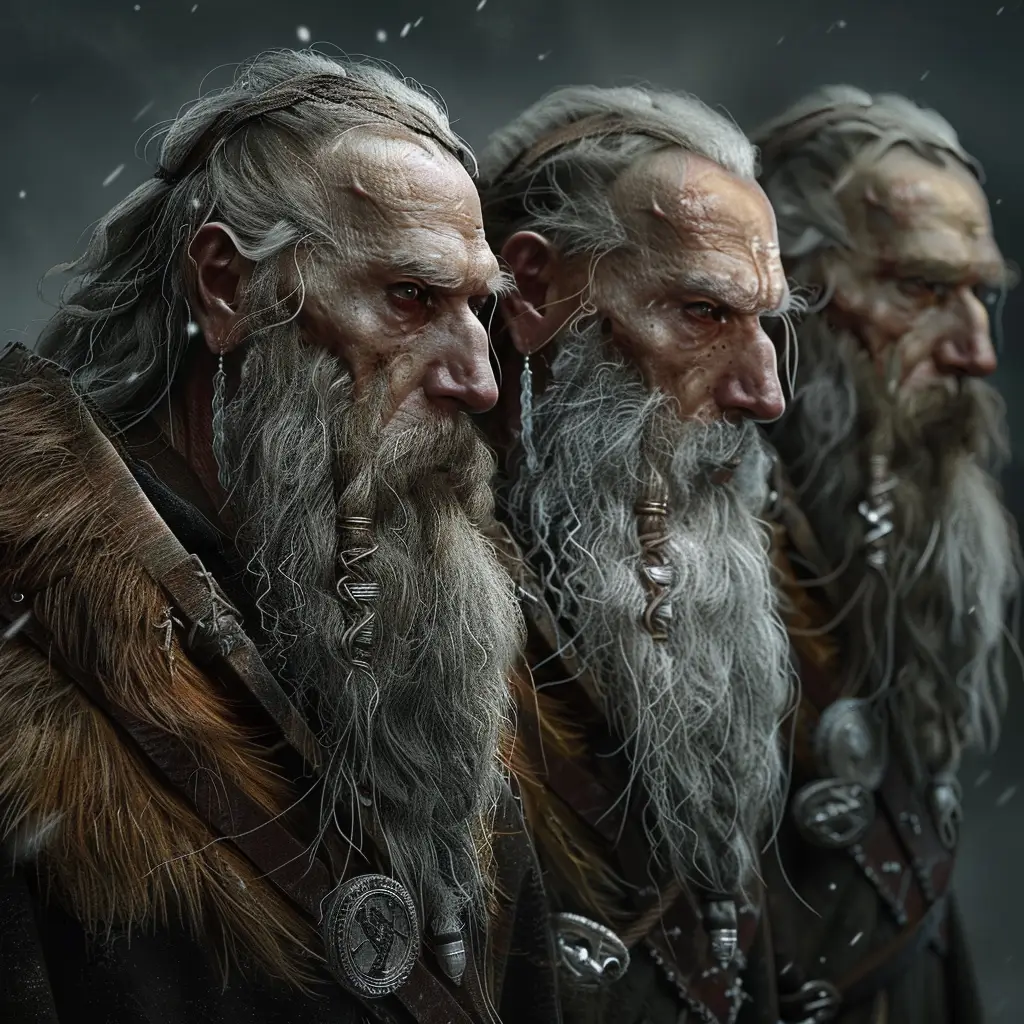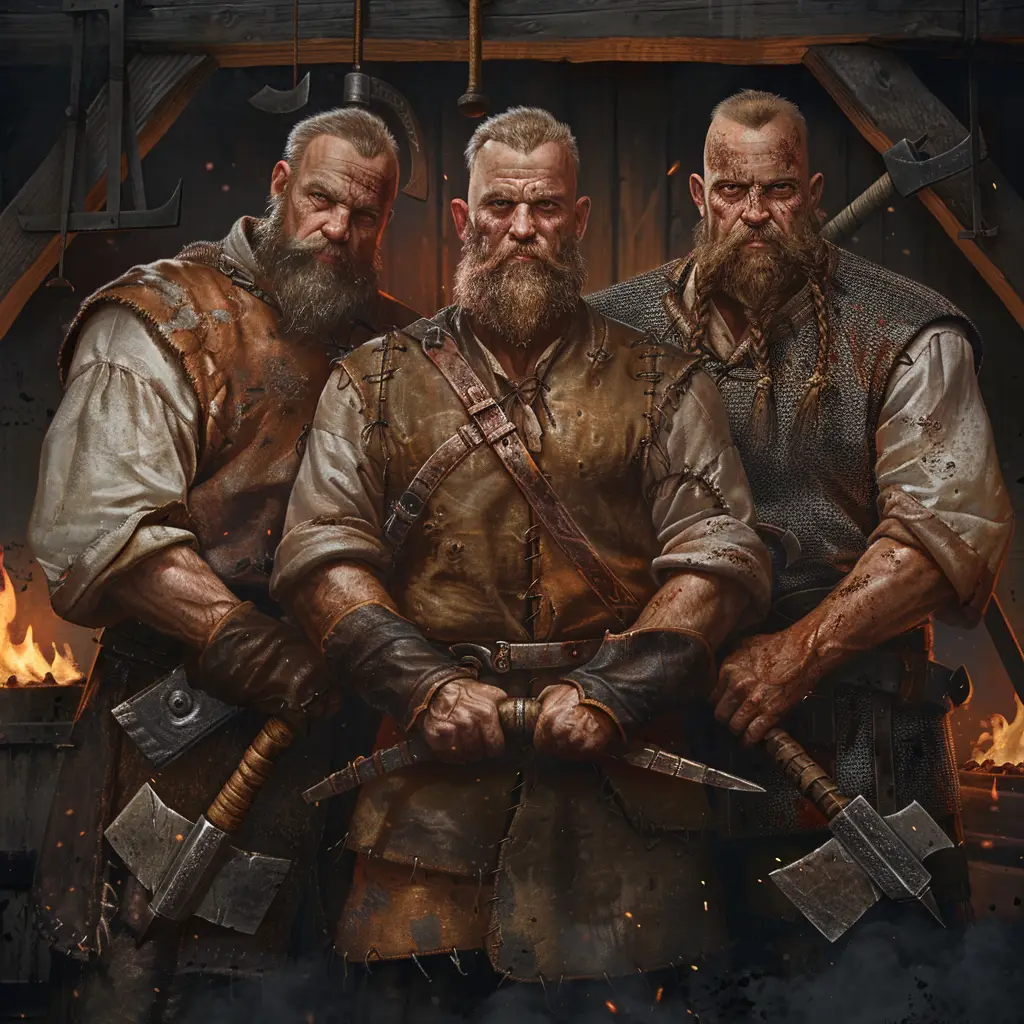“Völundarkviða” (The Lay of Völundr) is one of the poems in the Poetic Edda.
Synopsis of Völundarkviða
Prologue
The poem begins with a brief introduction to Völundr and his brothers, Egil and Slagfiðr, who are renowned for their skills in smithing. They live in the land of the Sámi and marry three Valkyries (swan maidens) who stay with them for several years.
Abandonment
After seven years, the Valkyries feel the pull of their destinies and leave their husbands. Völundr’s brothers set off to search for their wives, but Völundr stays behind, working at his forge and awaiting the return of his beloved.
Capture and Enslavement
King Niðhad, envious of Völundr’s skills and treasures, captures Völundr while he is alone. Niðhad has Völundr’s hamstrings cut to prevent him from escaping, and forces him to work as a smith in his court.
Revenge
Völundr bides his time, crafting exquisite items for the king while secretly plotting his revenge. He kills Niðhad’s sons, making goblets from their skulls, jewels from their eyes, and a brooch from their teeth. He sends these gruesome gifts to the king and queen, who remain unaware of their origin.
Bödvild
Völundr seduces Niðhad’s daughter, Bödvild, and impregnates her, further enacting his revenge on the king’s family. Bödvild, unaware of Völundr’s true intentions, visits him to have a broken ring repaired, and Völundr takes advantage of the situation.
Escape
Völundr fashions a set of wings and flies away, escaping his captivity. From the sky, he taunts Niðhad, revealing the truth of his actions and the fate of the king’s sons. Niðhad is left powerless as Völundr escapes to freedom.
Key Themes and Symbolism
Mastery and Craftsmanship
Völundr’s exceptional skills as a smith are central to his identity. His ability to create wondrous items reflects the high value placed on craftsmanship and artistry in Norse culture.
Betrayal and Revenge
The poem explores deep themes of betrayal and vengeance. Völundr’s enslavement and mutilation by Niðhad provoke a calculated and brutal response, highlighting the harsh realities of retribution.
Transformation and Liberation
Völundr’s creation of wings and his subsequent escape symbolize transformation and liberation. Despite his suffering and the darkness of his revenge, Völundr ultimately transcends his earthly bonds and regains his freedom.
Power and Powerlessness
The dynamic between Völundr and Niðhad shifts dramatically throughout the poem. Initially powerless and enslaved, Völundr’s cunning and skill eventually turn the tables, leaving Niðhad impotent and bereaved.
Cultural and Literary Significance
Mythological Context
“Völundarkviða” is a crucial part of the Norse mythological canon. It connects to broader themes in Norse mythology, such as the interplay between gods, humans, and supernatural beings.
Influence on Later Works
The story of Völundr has influenced various literary and artistic works across centuries. His tale appears in different forms in Germanic and Anglo-Saxon literature, including the “Franks Casket” and references in “Beowulf.”
Modern Interpretations
In contemporary culture, Völundr’s story has inspired fantasy literature, comics, and art, reflecting the enduring appeal of his character and the timeless themes of his tale.


